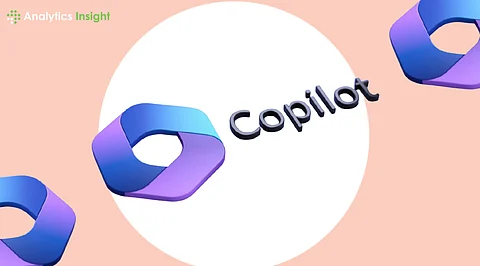

Surprisingly, privacy concerns solved through 10-second buffer technology
Windows users unaware voice commands work offline unlike competitors
The hidden advantage of Microsoft's voice assistant integration strategy
Talking to computers might soon become as natural as talking to people. Microsoft just took a major step toward this reality with the introduction of a simple voice command that promises to change how Windows users interact with their machines.
The tech giant has begun rolling out "Hey, Copilot!" to Windows Insiders. This new wake word feature lets users activate the AI assistant hands-free. The rollout represents another move in the ongoing battle between tech companies to create the most intuitive AI companion.
The new Hey Copilot feature allows Windows users to invoke Microsoft's AI assistant simply by speaking the wake phrase. This opt-in capability provides a completely hands-free experience, keeping individuals in their workflow when quick answers are needed or ideas need to be discussed.
Once enabled through the Copilot app settings, users can activate the assistant by saying "Hey, Copilot" followed by their query. The system indicates it's listening with an on-screen microphone icon and a subtle chime. When a conversation ends – either by tapping the X button or after a few seconds of silence – the system plays a confirmation sound that the session has concluded.
The feature utilizes an on-device wake word detection system with a 10-second audio buffer that operates entirely in memory. This design ensures that audio isn't recorded or stored locally, addressing privacy concerns that often surround voice-activated technology.
Microsoft began rolling out the Hey Copilot feature to Windows Insiders on 14 May 2025, through the Microsoft Store. The functionality comes with Copilot app version 1.25051.10.0 and higher, though not all Insiders will receive the update simultaneously due to the gradual deployment approach.
Currently the wake word feature is only available to Windows Insiders who have set English as their display language. Microsoft hasn't announced a timeline for general availability. Their typical development pattern suggests broader deployment will follow after sufficient testing and refinement based on Insider feedback.
In the competitive landscape of voice assistants, Microsoft's Hey Copilot feature distinguishes itself through several key aspects that appeal to tech enthusiasts.
Microsoft has implemented a privacy-centric approach by ensuring wake word recognition happens locally on the device. The Hey Copilot feature only begins transmitting audio to the cloud after detecting the wake phrase and to process the user's query. This approach addresses growing privacy concerns among tech enthusiasts who remain wary of always-listening devices.
Moreover, the feature is integrated directly into the Windows ecosystem, offering potential for deeper interaction with system features and applications than third-party assistants.
Also Read: How Microsoft Build 2025 Is Shaping the Future of AI and Windows?
The Hey Copilot feature works on any Windows 11 PC with a functional microphone and the updated Copilot app installed. Performance will be enhanced on the new Copilot+ PCs – devices equipped with Neural Processing Units capable of performing over 40 trillion operations per second.
Currently, the wake word functionality only supports English, but Microsoft appears committed to expanding language support. This aligns with their broader Copilot strategy as evidenced by Microsoft 365's Copilot features, which already support multiple languages, including Arabic, Chinese, French, German, Japanese, and Spanish.
Yusuf Mehdi, Microsoft's Corporate Vice President, emphasized the feature's significance: "With a simple 'Hey, Copilot!' users will soon be able to start a conversation with Copilot Voice and stay in their flow when answers to questions are needed or ideas need to be discussed."
Early feedback from Windows Insiders indicates positive reception of the Hey Copilot feature. Many users have highlighted its responsiveness and smooth integration with the Windows environment. Tech enthusiasts appreciate the hands-free interaction, which enhances productivity for more effective multitasking.
Microsoft is actively collecting feedback right through the Copilot app, where users share experiences by clicking on the profile icon and selecting "Give feedback." This direct feedback loop will very likely impact the next phase of refinements to this feature before it goes into wider release.
The introduction of Hey Copilot marks a turning point for voice interfaces. More and more users are expecting verbal communication with devices, making this notion a necessity.
Microsoft is currently emphasizing collaboration aptitude over just obeying commands. This contrasts with many of the other vendors who cast their assistants mostly as mere service providers.
Since such a shift may change computing fundamentals. Voice, in the future, may override the traditional desktop as the primary mode of interaction with machines.
Also Read: Say Hello to Your AI Agent: Microsoft's Copilot Plus Gets Smarter
